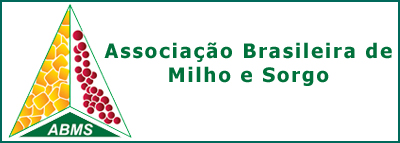NECESSIDADE HÍDRICA DA CULTURA DO MILHO INFLUENCIADA PELAS MUDANÇAS CLIMÁTICAS NO SEMIÁRIDO NORDESTINO
DOI:
https://doi.org/10.18512/1980-6477/rbms.v17n2p251-262Palavras-chave:
zea mays, temperatura, umidade relativaResumo
RESUMO - O presente trabalho teve como objetivo verificar os impactos das mudanças climáticas no desenvolvimento e evapotranspiração do milho, no semiárido brasileiro. O trabalho foi desenvolvido nos municípios de Apodi, Ipanguaçu e Mossoró, todos eles localizados no estado do Rio Grande do Norte. A determinação da evapotranspiração da cultura (ETc), em suas diferentes fases, foi realizada através de lisímetros de pesagem. Para verificar a influência das mudanças climáticas no consumo hídrico da cultura foram simuladas alterações na temperatura e na umidade relativa do ar, através do modelo climático PRECIS. Foram avaliados dois cenários de emissões baseados no relatório do IPCC (Intergovernmental Panel on Climate Change), um pessimista (A2) e um otimista (B2). Os dados de temperatura e umidade relativa utilizados foram as saídas do modelo PRECIS. Segundo as projeções do modelo as temperaturas na região ficarão muito acima do limite ótimo para o desenvolvimento da cultura. A duração do ciclo da cultura apresentou uma redução média de 10 e 15 dias para os cenários B2 e A2, respectivamente. A redução no ciclo também provocou uma diminuição de 3,0% na evapotranspiração total, considerando o cenário mais otimista, e de 4,4% no cenário mais pessimista.
Palavras-chave: Zea mays, temperatura, umidade relativa, evapotranspiração.
DEVELOPMENT AND WATER REQUIREMENT OF MAIZE CROP AFFECTED BY CLIMATE CHANGES IN THE SEMIARID REGION OF THE BRAZILIAN NORTHEAST
ABSTRACT - This study aimed to determine the impacts of climate changes on growth and evapotranspiration of maize in the Brazilian semiarid region. The study was conducted in the municipalities of Apodí, Ipanguaçu and Mossoró, all of them located in the state of Rio Grande do Norte. The determination of evapotranspiration (ETc) throughout the different crop phases was accomplished by weighing lysimeters.In order to check the effect of climate changes on crop water consumption, simulated changes were done in the temperature and relative humidity of the air, through the PRECIS climate model. Two scenarios of emissions were evaluated based on the IPCC report (Intergovernmental Panel on Climate Change): a pessimistic caled A2 and an optimistic B2. The data of temperature and relative humidity were obtained by the PRECIS model. According to the model projections, the temperatures in the region will be far above the optimal limit for crop development. The crop cycle showed an average reduction of 10 and 15 days for B2 and A2 scenarios, respectively. The reduction in the cycle also caused a decrease in the total evapotranspiration of 3.0%, considering the most optimistic scenario, and 4.4% in the worst scenario.
keywords: Zea mays, temperature, relative humidity, evapotranspiration.
Downloads
Publicado
Como Citar
Edição
Seção
Licença
Autores que publicam nesta revista concordam com os seguintes termos:- Autores mantém os direitos autorais e concedem à revista o direito de primeira publicação, com o trabalho simultaneamente licenciado sob a Creative Commons Attribution License que permitindo o compartilhamento do trabalho com reconhecimento da autoria do trabalho e publicação inicial nesta revista.
- Autores têm autorização para assumir contratos adicionais separadamente, para distribuição não-exclusiva da versão do trabalho publicada nesta revista (ex.: publicar em repositório institucional ou como capítulo de livro), com reconhecimento de autoria e publicação inicial nesta revista.
- Autores têm permissão e são estimulados a publicar e distribuir seu trabalho online (ex.: em repositórios institucionais ou na sua página pessoal) a qualquer ponto antes ou durante o processo editorial, já que isso pode gerar alterações produtivas, bem como aumentar o impacto e a citação do trabalho publicado



